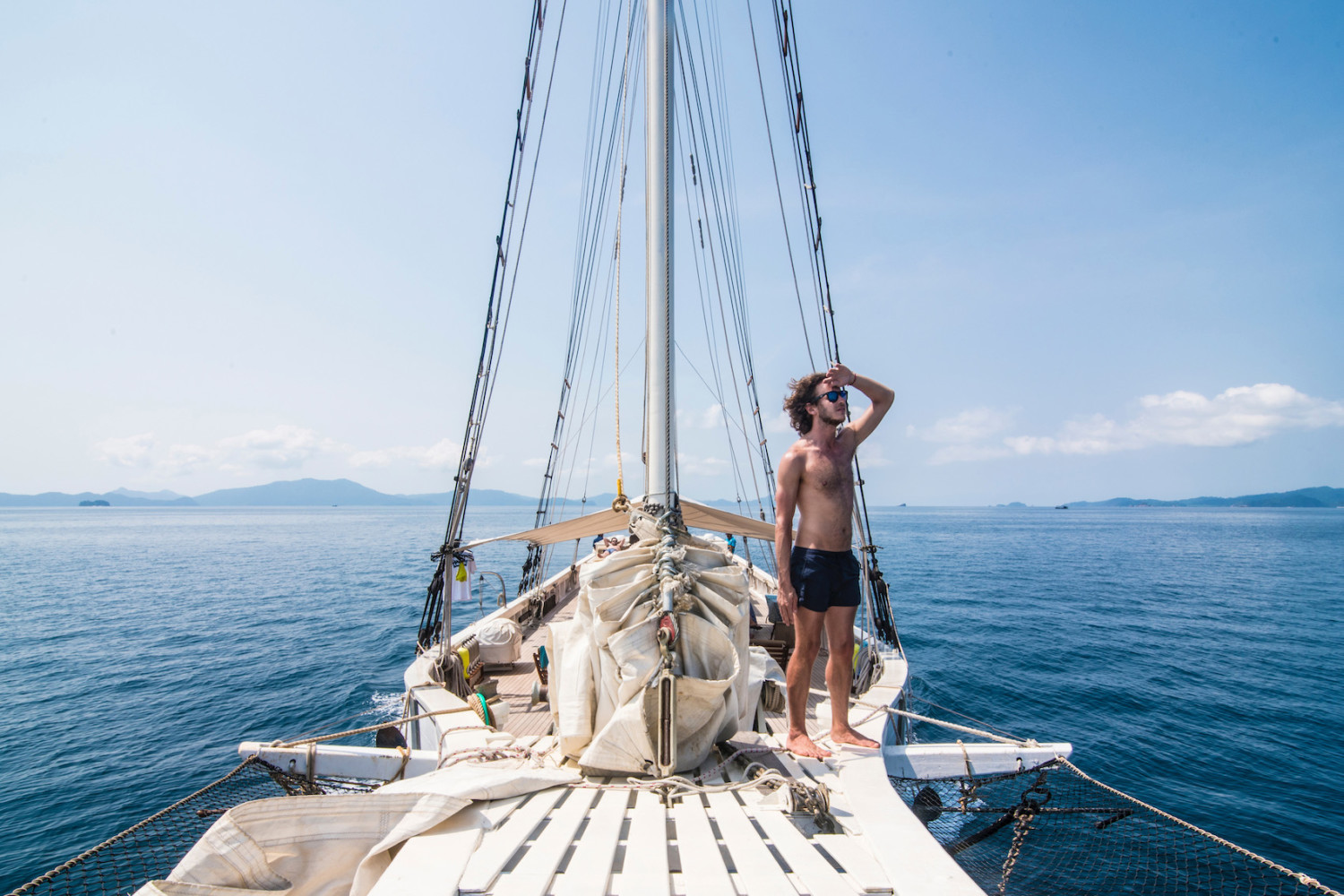Although the beach shines a blinding white from hundreds of yards away, the gently lapping waves appear dark and colorless until I’m gliding on top of them, when the two o’clock sun refracts through the shallow water as if it’s liquid emeralds.
The exposed sand burns the soles of my feet with the fire of a thousand hells, so I do an about-face and wade out into the viridescence. By the time I’m half-submerged, the sea has blued almost to cobalt and the sand is bubbling under my heavy footsteps, a proverbial jacuzzi salty enough to cleanse my skin, but not to burn my open eyes nor desiccate my pursed lips.
This is Paradise, or as close as I’ve ever come to it. And I’ve forgotten how I got there, until the yacht in the distance begins to come into focus.
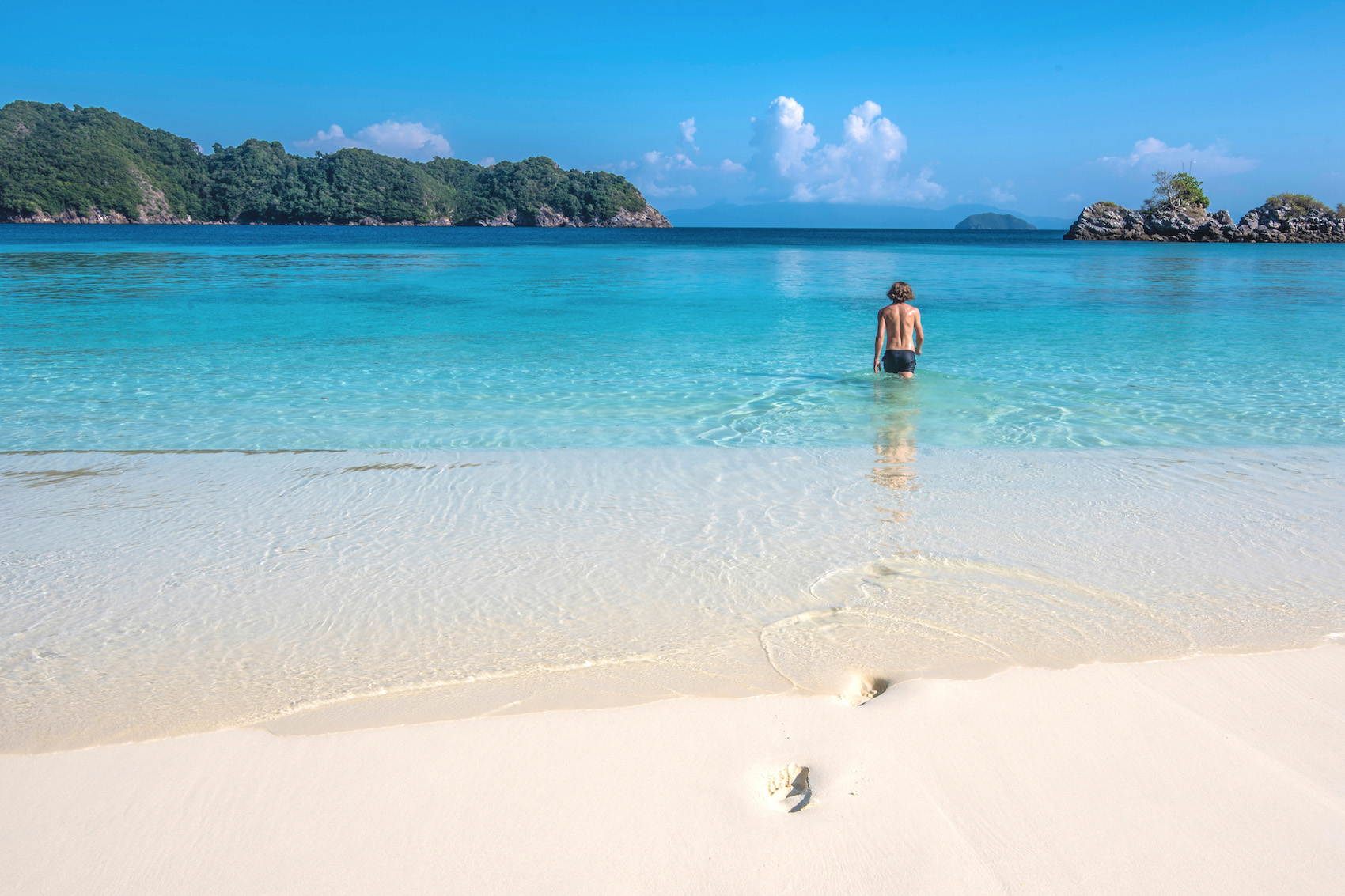
As I descend toward Kawthaung Harbor, which separates the Andaman coastlines of Myanmar and Thailand, the air fills with a generalized odor of fish, somewhere between drying and rotting. I board a waiting dinghy just seconds before I think I’ll succumb to the redolence and before I know it, the charming captain of the SY Raja Laut is welcoming me aboard his boat.
There’s a palpable awkwardness between the 10 other travelers and I until we began tearing into the same whole fish, whose crimson sauce sparkles like the pagodas on the verdant hills that rise around us.
“I actually declined Burma Boating’s initial offer to sail with them,” I explain, once the mood is sufficiently intimate for introductions—and the deserved gasps that follow my revelation. “I quickly realized what a mistake I’d made—I was positively fervent in my apology email—but media cabins were booked solid.”
“Three years later,” I conclude, as the crew ceremoniously releases an injured sea eagle that’s fallen on deck, and the boat begins motoring toward the setting sun. “My desire is finally quenched.”
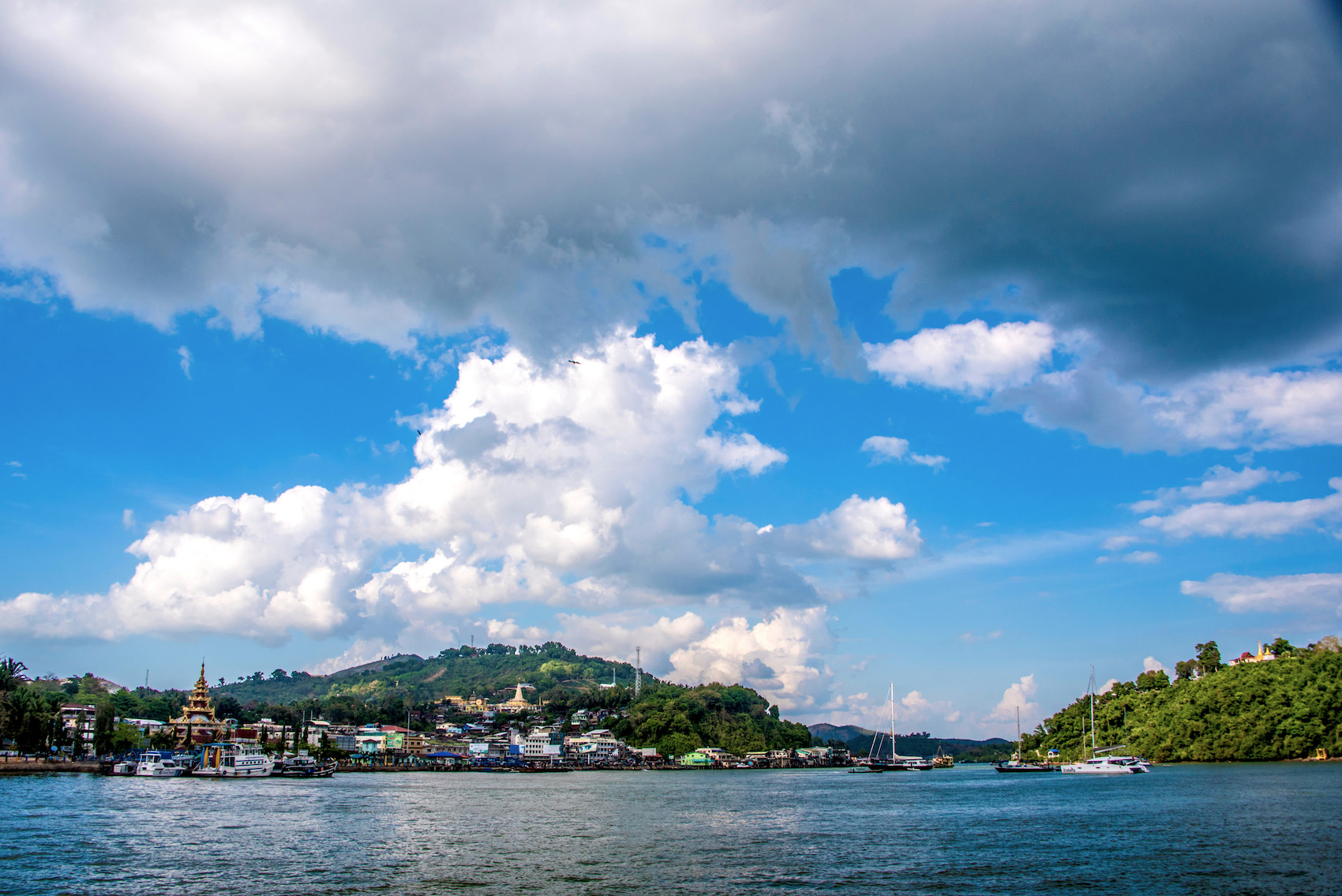
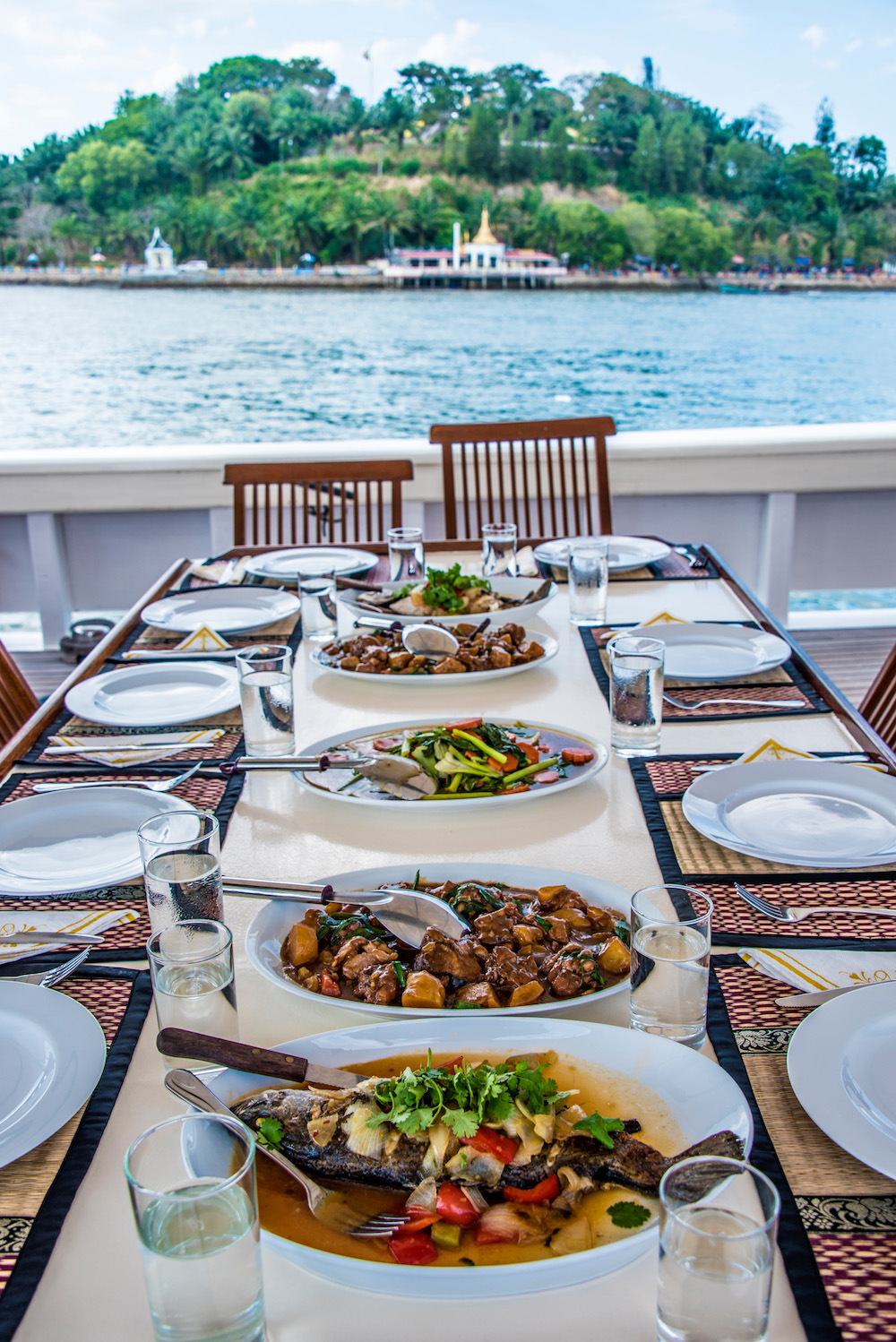

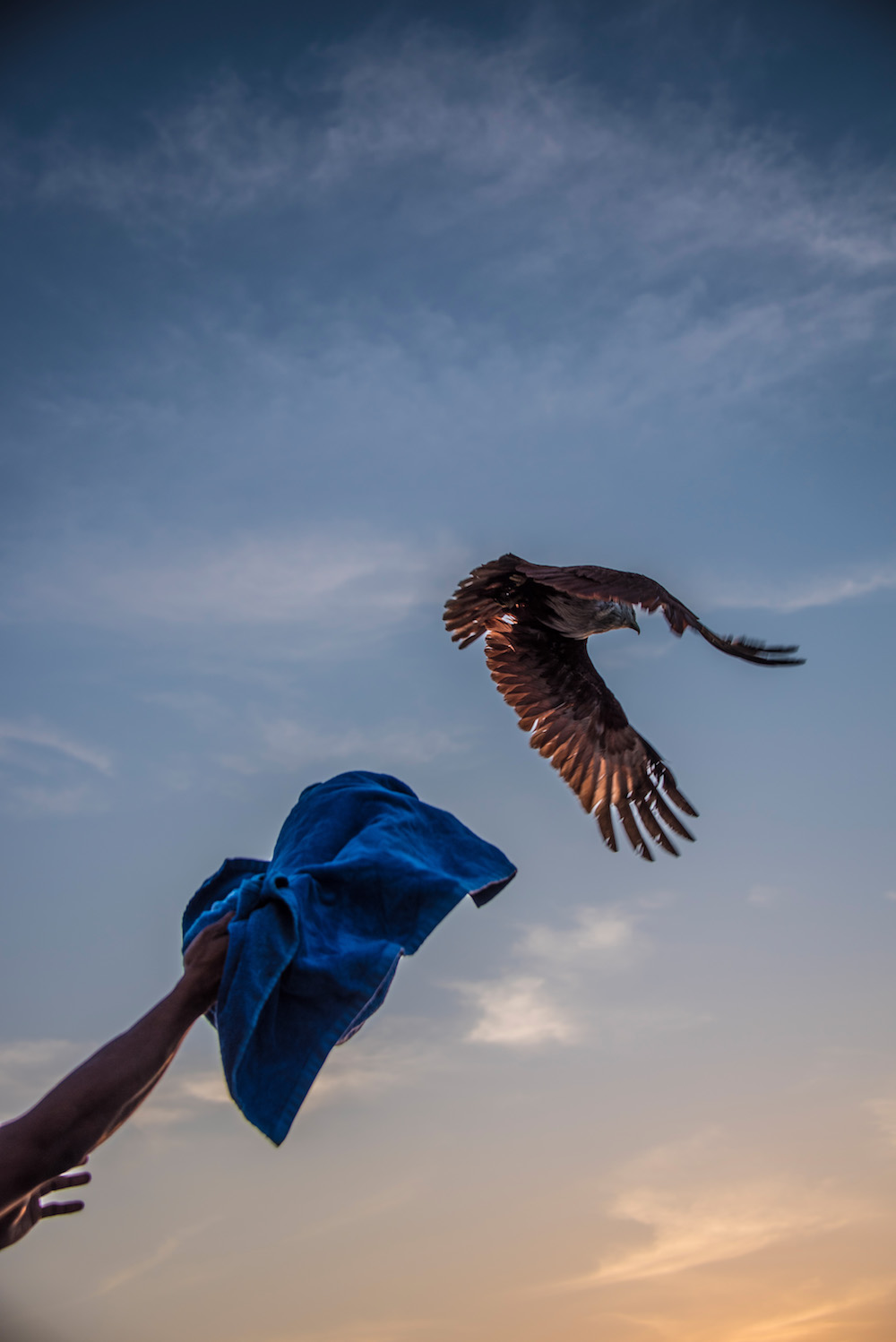
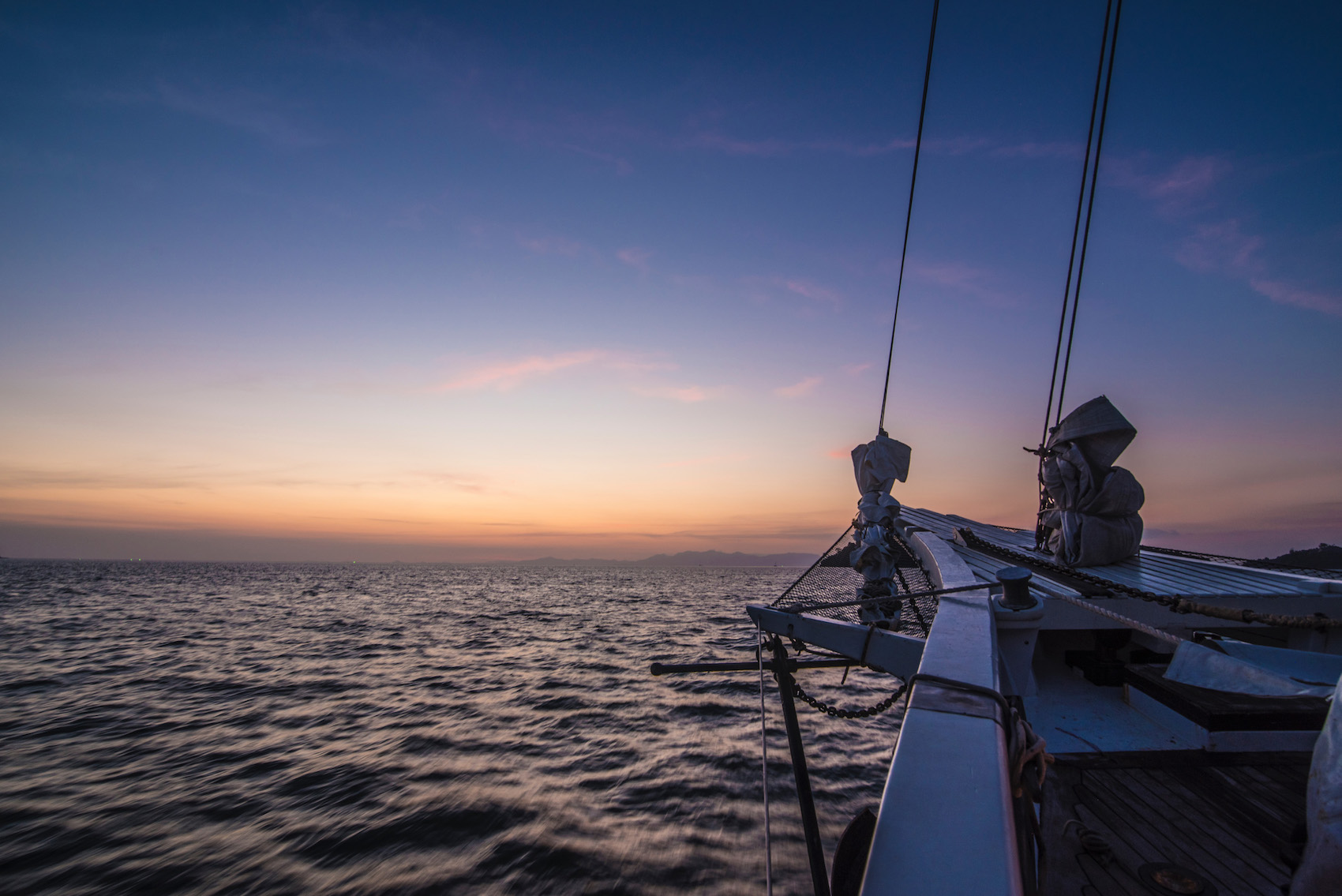
The crack of trees as I pull myself up the vertical mountainside with ropes as thick as their gangling trunks. The simultaneous sting of fresh bug bites and the way the mud the perpetrators live in soothes my newly broken skin as I slide through it. The hot fire of my breath racing in and out of my air passages.
One, two, three. One, two, three. One, two, three: The sequence feels infinite until the first ray of sunshine breaks through the jungle canopy. A solitary thought interrupts the flow. The precipice must be near.
Years ago, around the time Burma Boating first contacted me in fact, I stood frozen, halfway up Lion’s Head in Cape Town, as small children and their grandparents raced up the vertical cliff face behind me, totally unintimidated by the chains and grips they needed to do so. I eventually reached the summit, of course, but only after excessive misapprehension. This time, I just ascended.
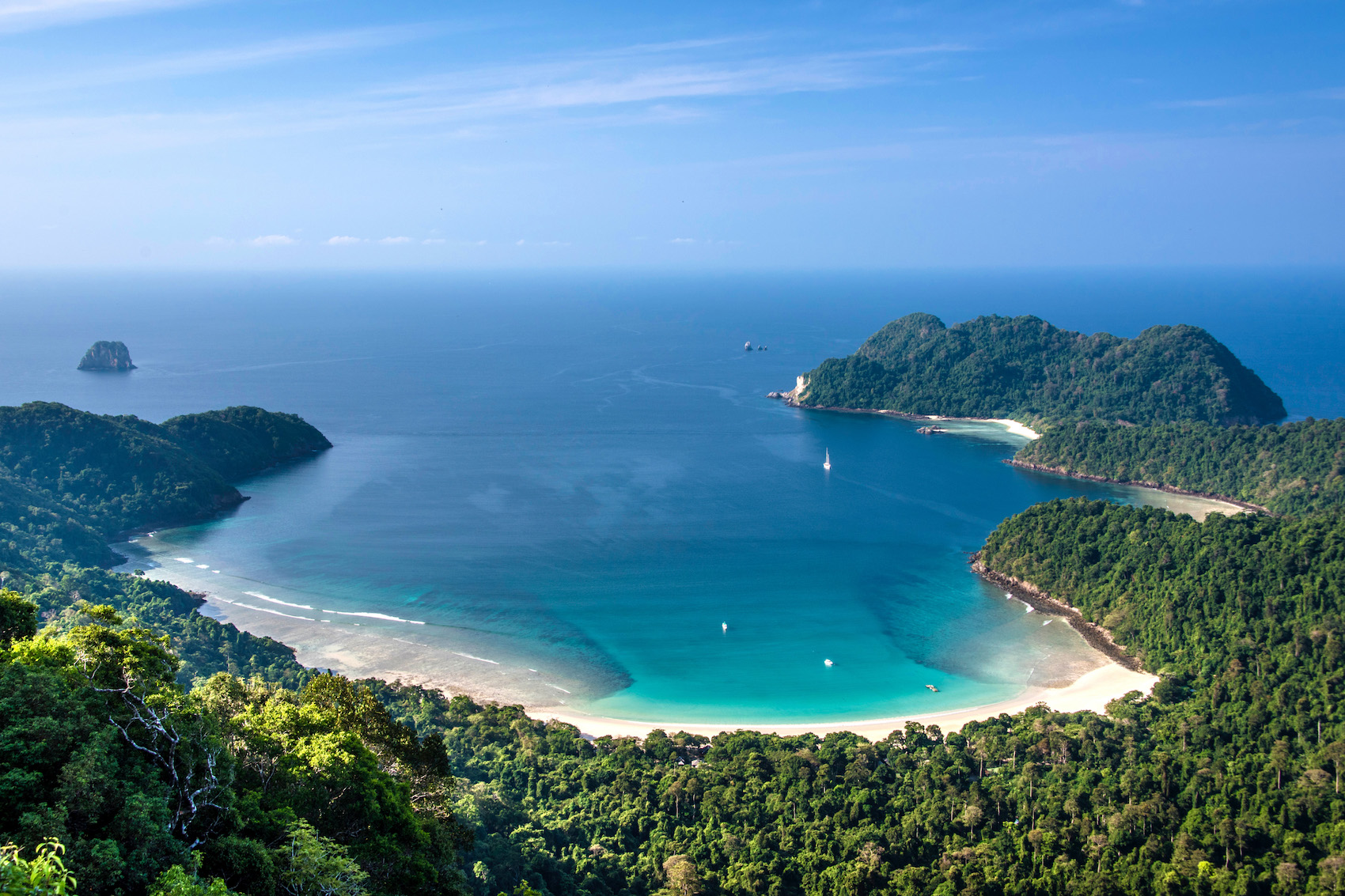
I marvel at the aquamarine bay beneath me, the majestic Raja Laut as imperceptible from this distance as a nautilus shell, and it’s no wonder to me that most of the Internet refers to the islands of the Mergui Archipelago collectively rather than individually: The idyllic scene stretching out before me could just as well be Barwell as Poni as Macleod Island.
Heaven, you see, requires neither classification, nor qualification, nor demarcation—these tactics are only useful in the netherworld.
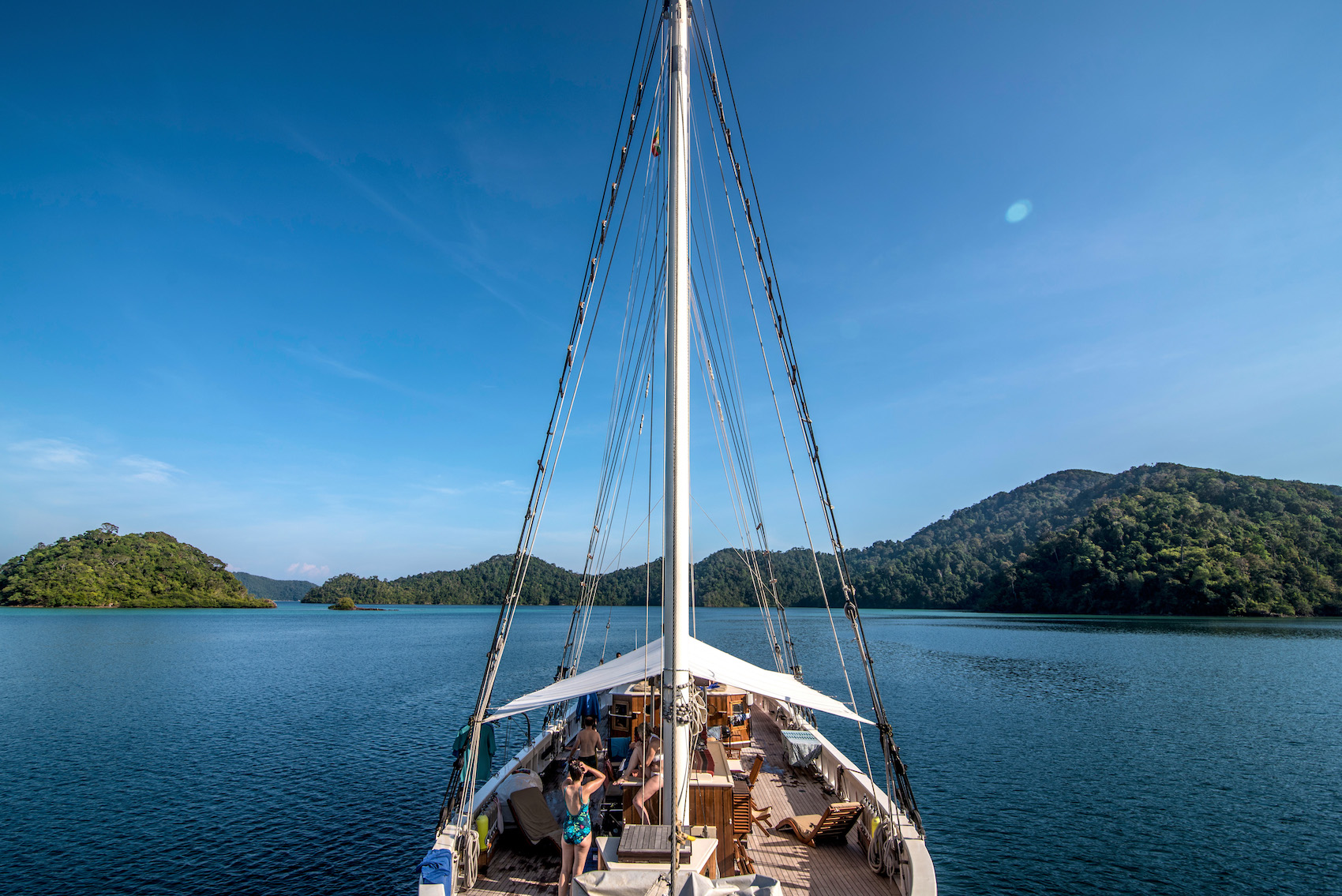
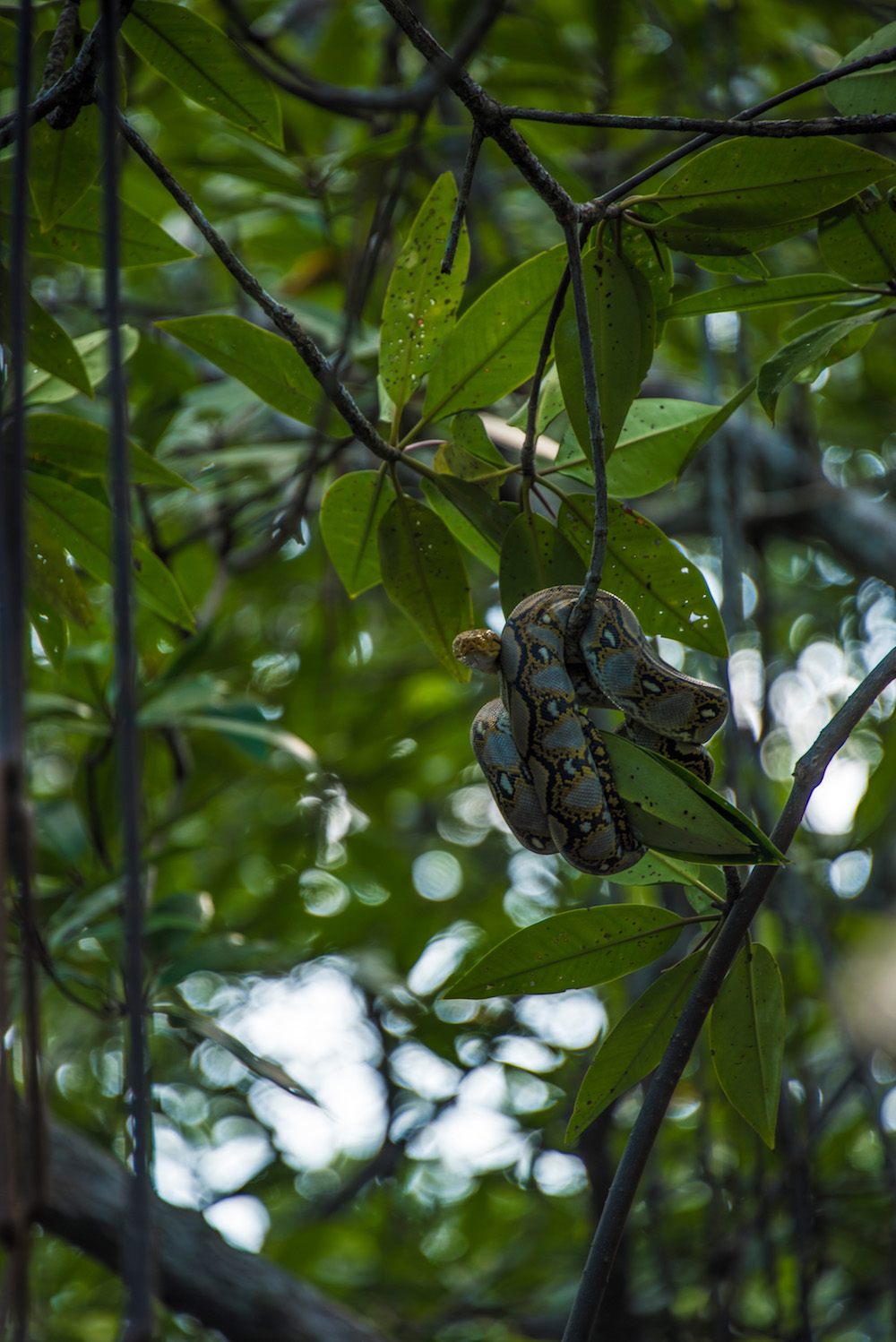
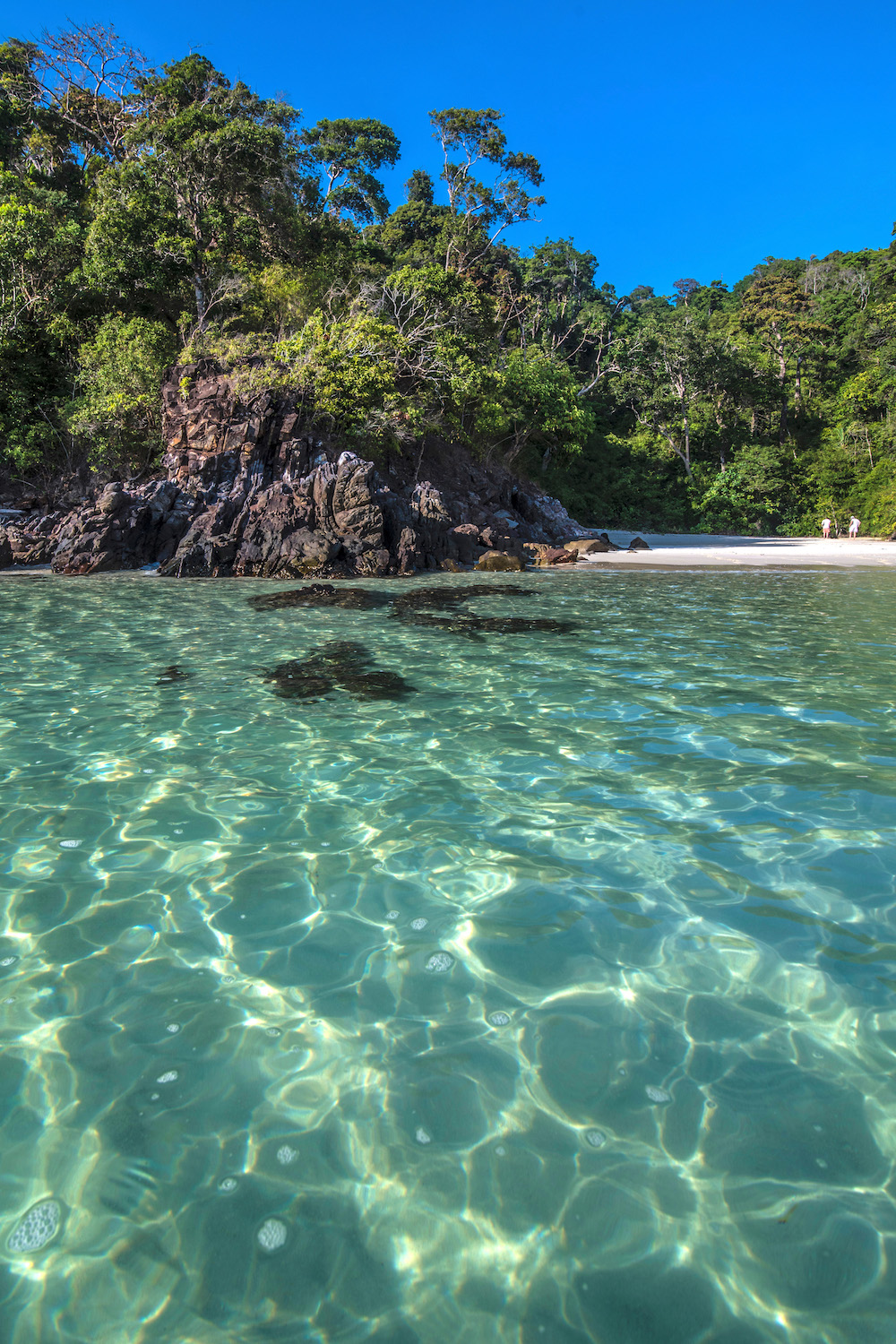
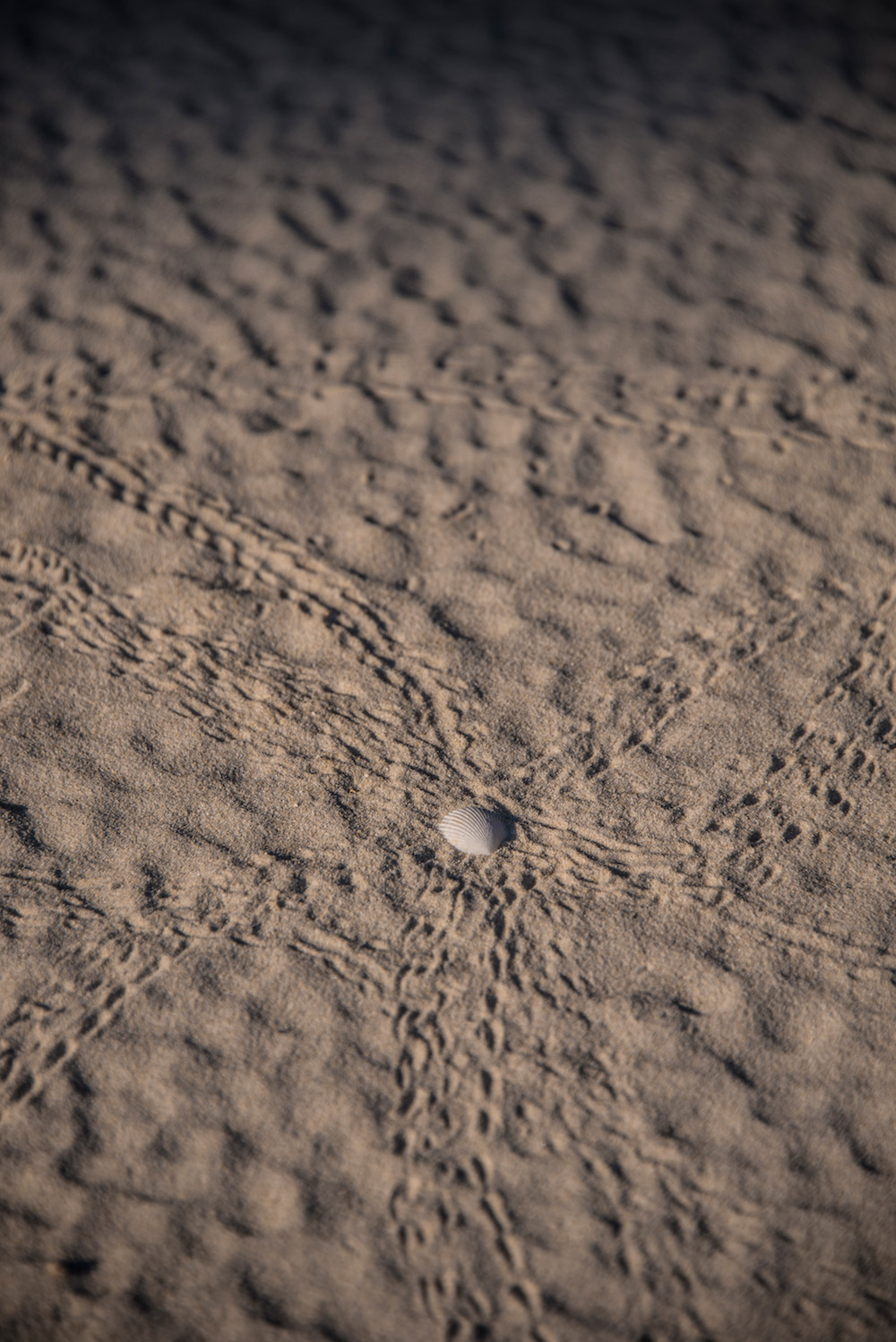
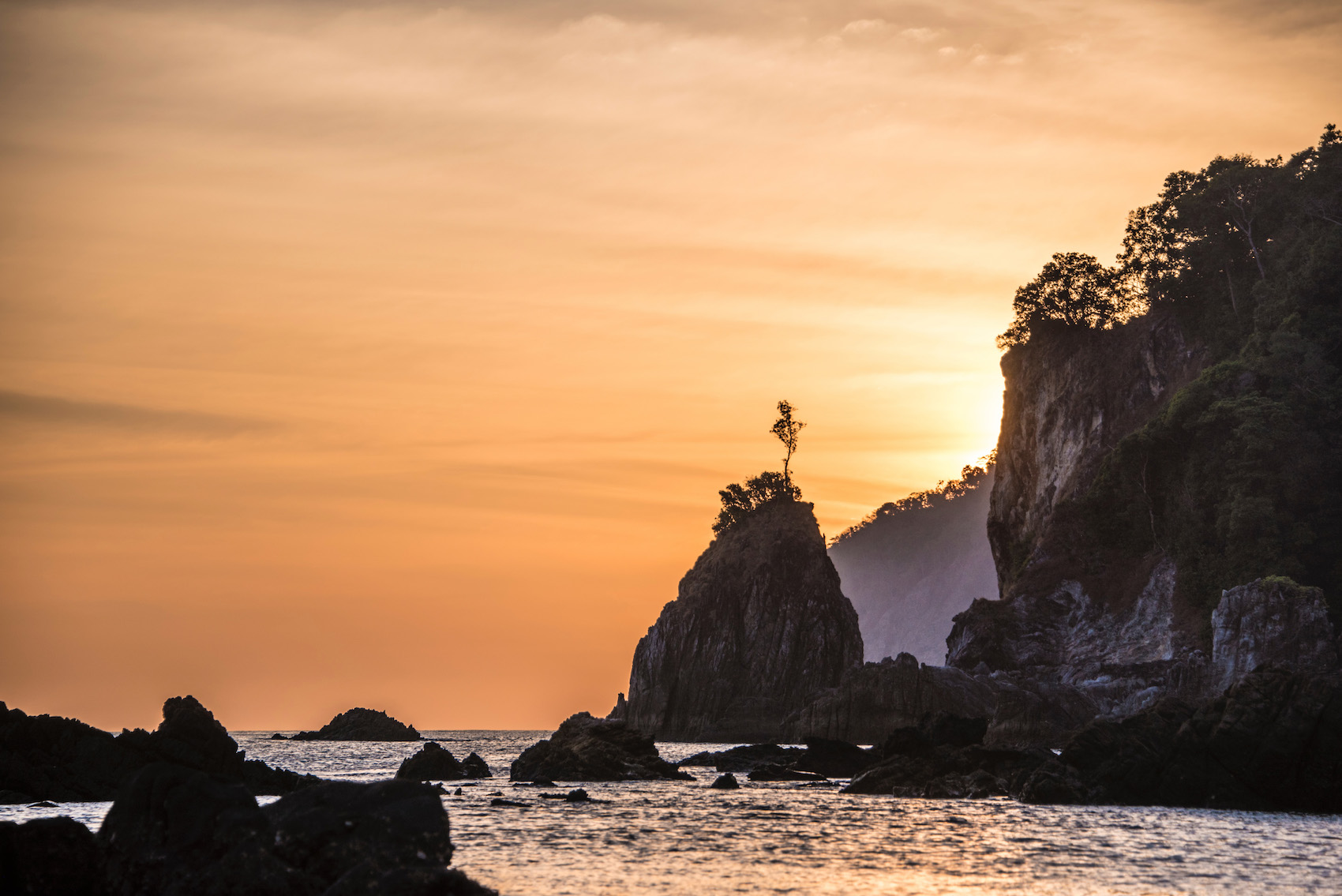
I’m walking through a “sea gypsy village” on the shores of Jaran Island, and the first thought that occurs to me is how paradoxical it seems for gypsies to be living in a village.
The second is how immediately packaging from the cookies and sodas we gave to village children ended up in the water they swim in, or perhaps my best guess at the age they’ll develop diabetes.
I mean, it’s quite obvious the construction of the massive temple that overlooks this cacophony of tin-roofed shacks is intended purely for the tourists the Burmese government hopes will flock here one day. Is this place even real? Are these people just holograms?
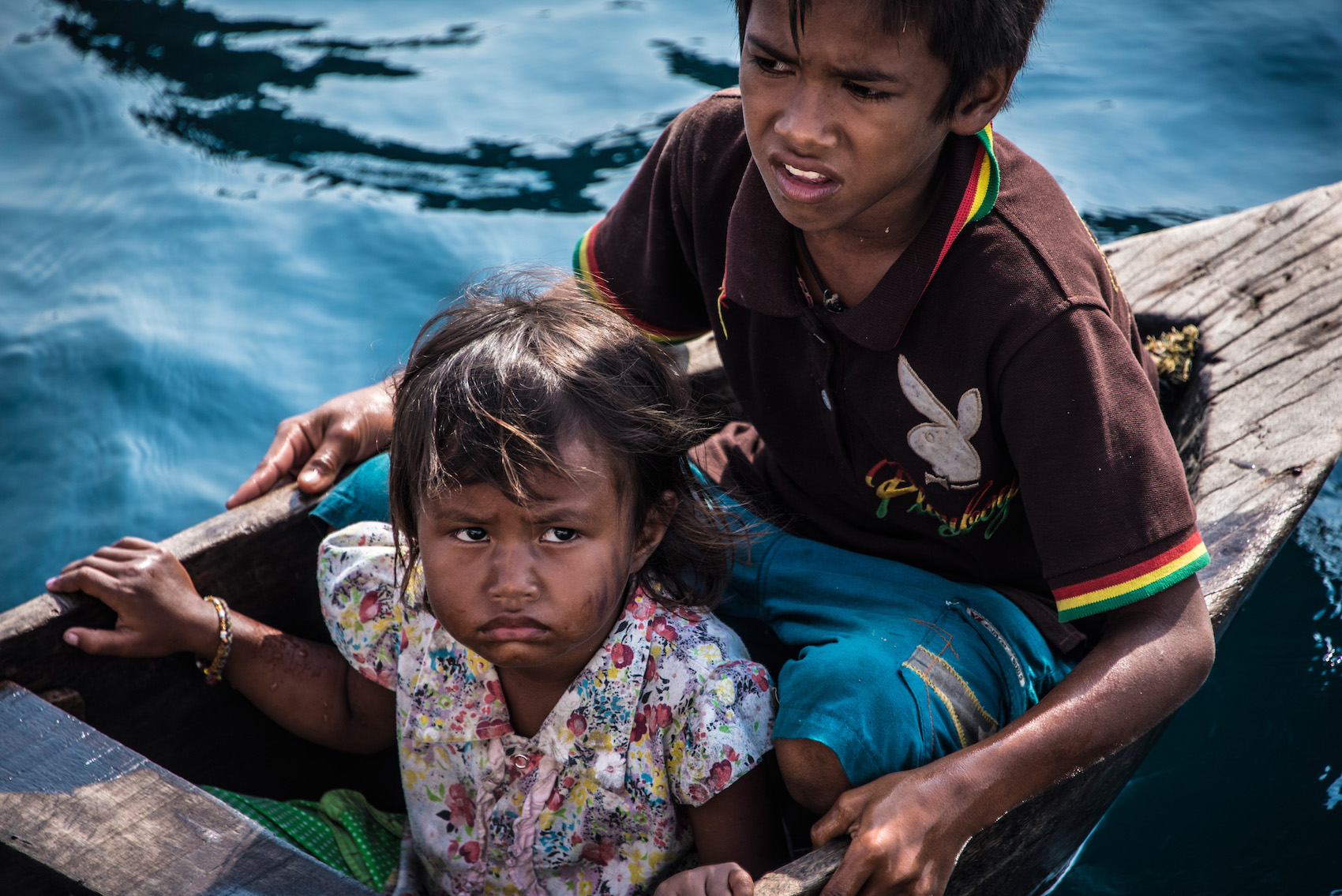
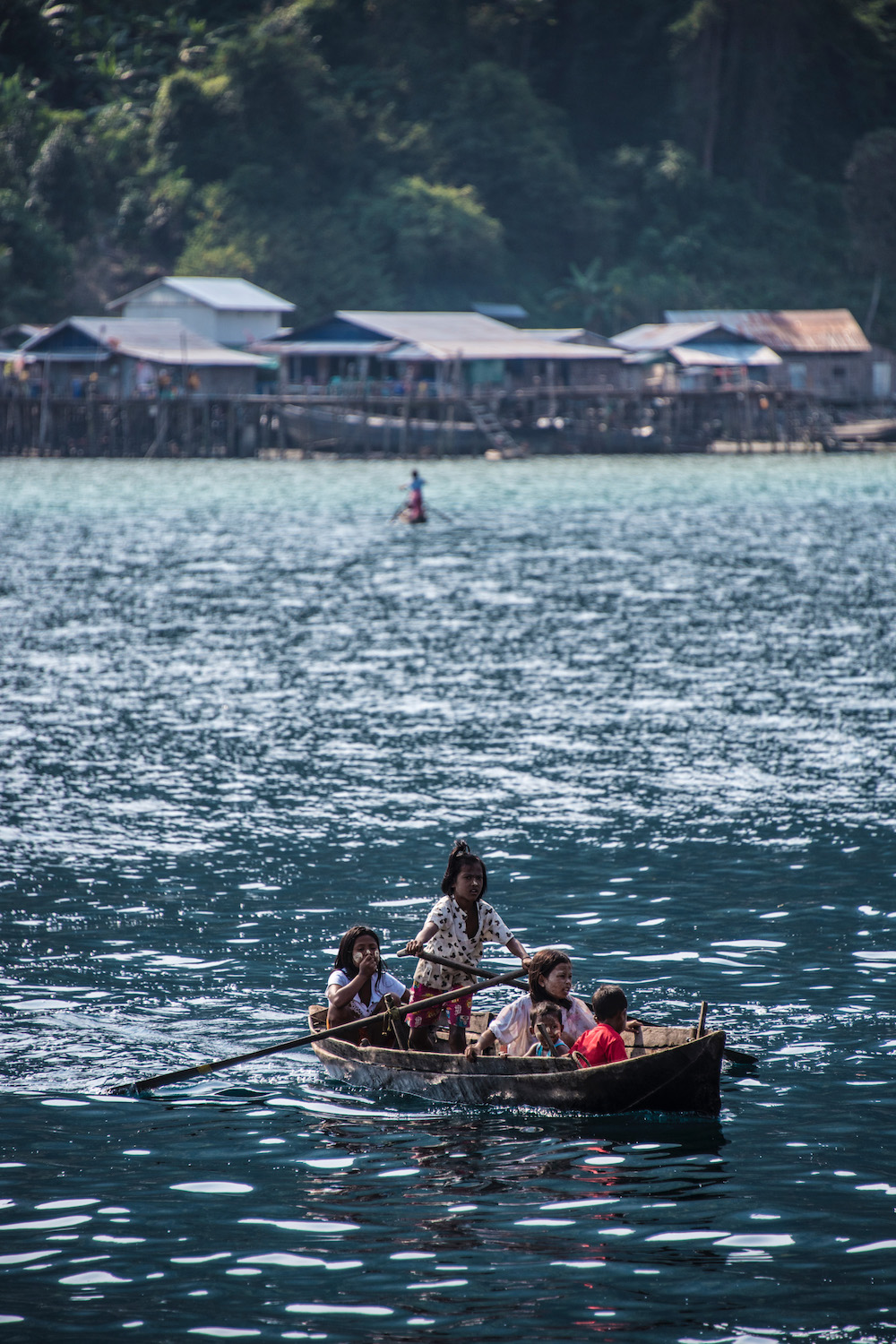

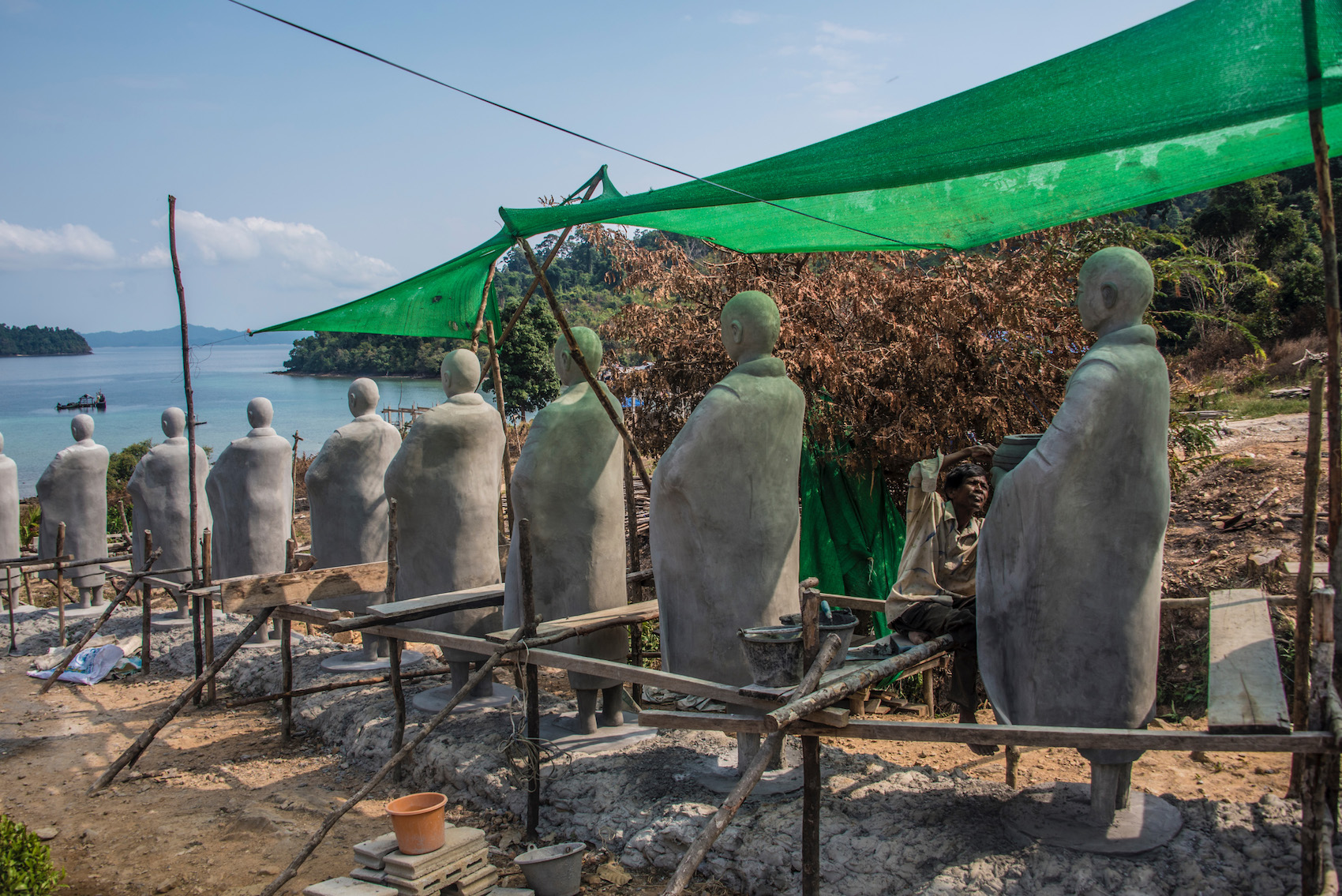
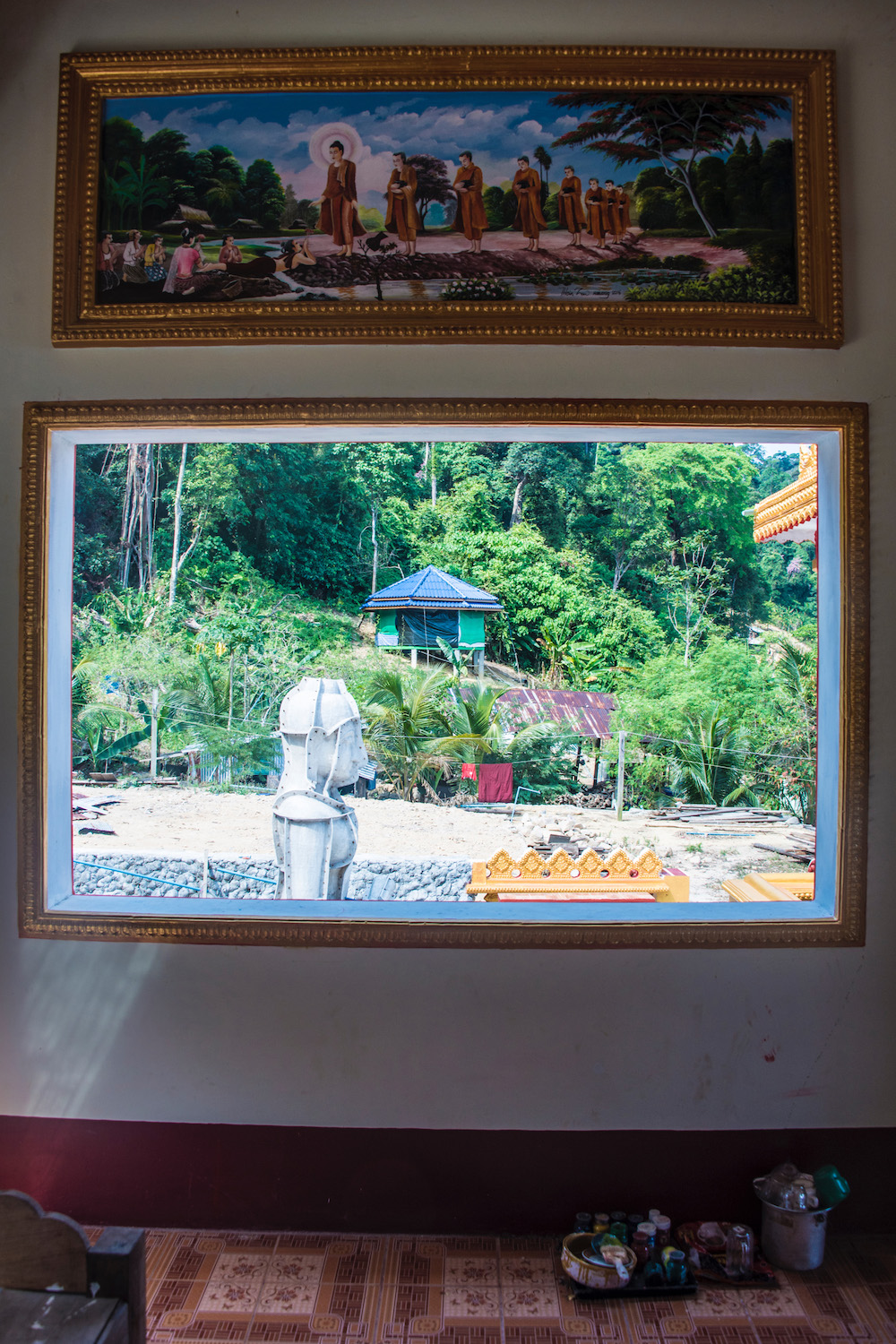
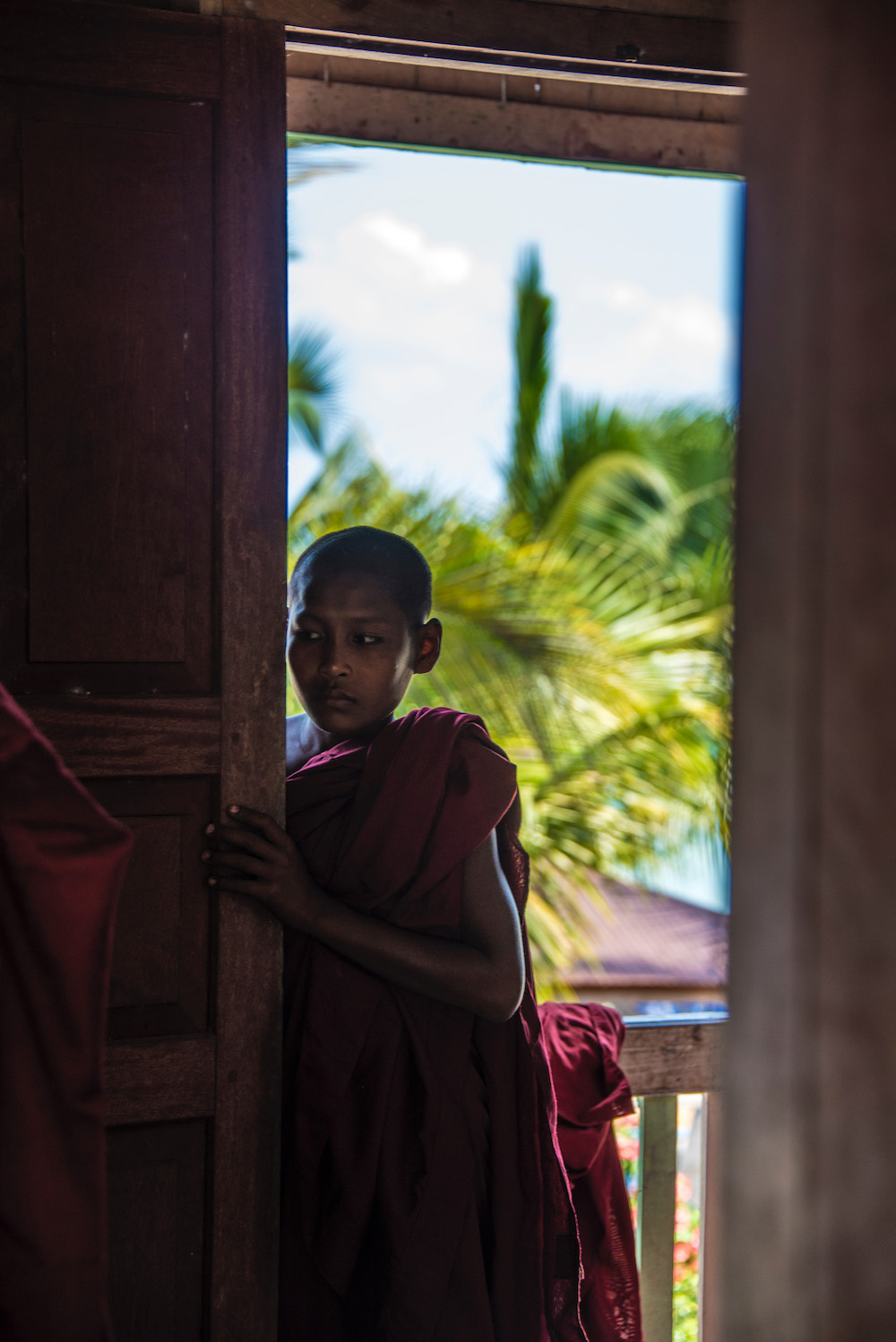
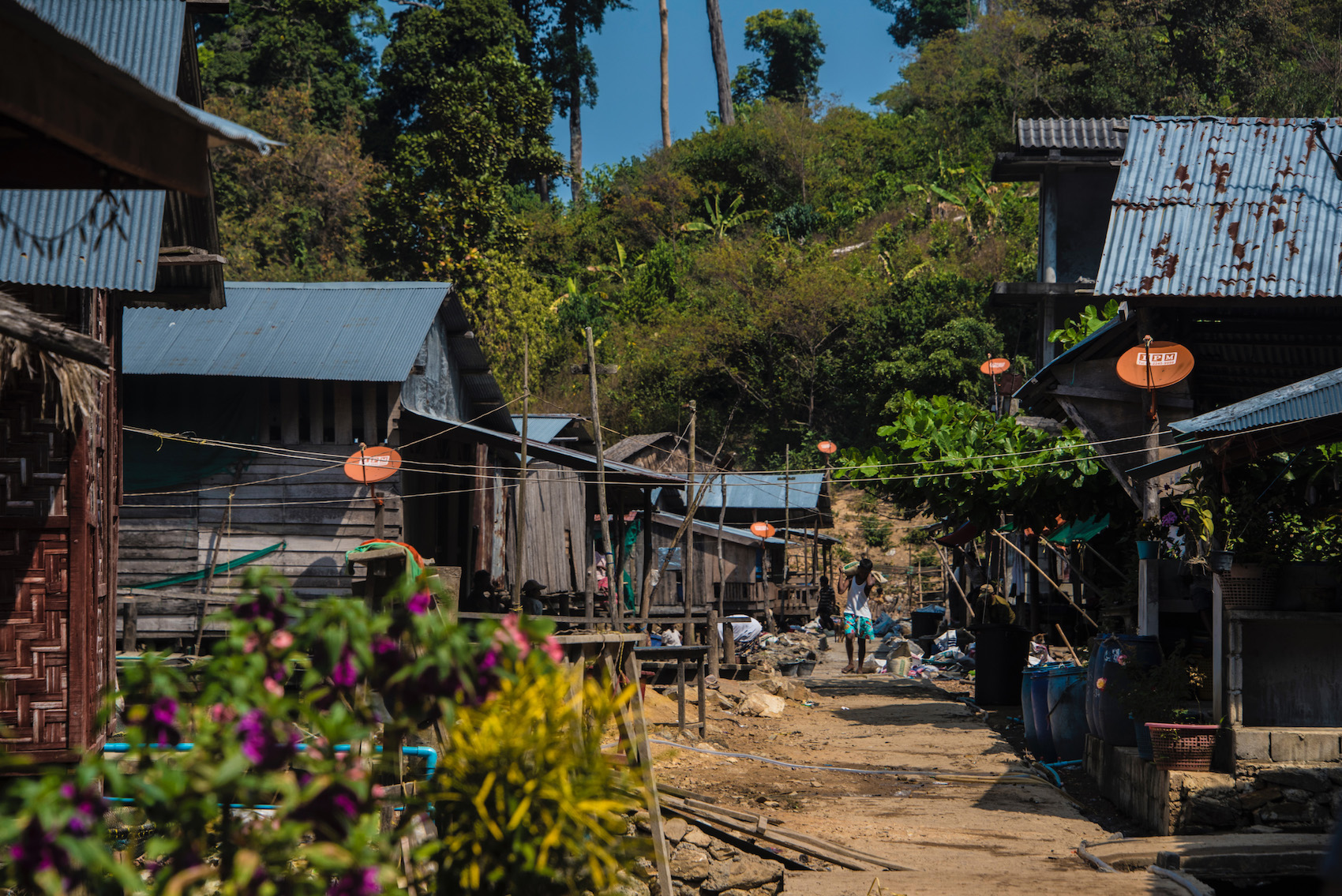
Somewhere between marveling at a man who’s sculpting concrete into Buddhas images and feeling mesmerized by the fact that satellite dishes seem to be as numerous here as stray animals, I hearken back to the conclusion I reached in the wake of my last trip to Myanmar.
It’s none of your God-damned business how these people behave, I remind myself, making an exception for whomever prepared the ice cream that nearly killed me in Mandalay. If you truly believe they’re not smart enough to leverage your money, voyeurism and sugary snacks into self-determination, get your condescending ass back to Thailand.
I decline the water the monk pours into the dirty, plastic mug in front of me, but happily deposit a 5,000-kyat note into his collection box.
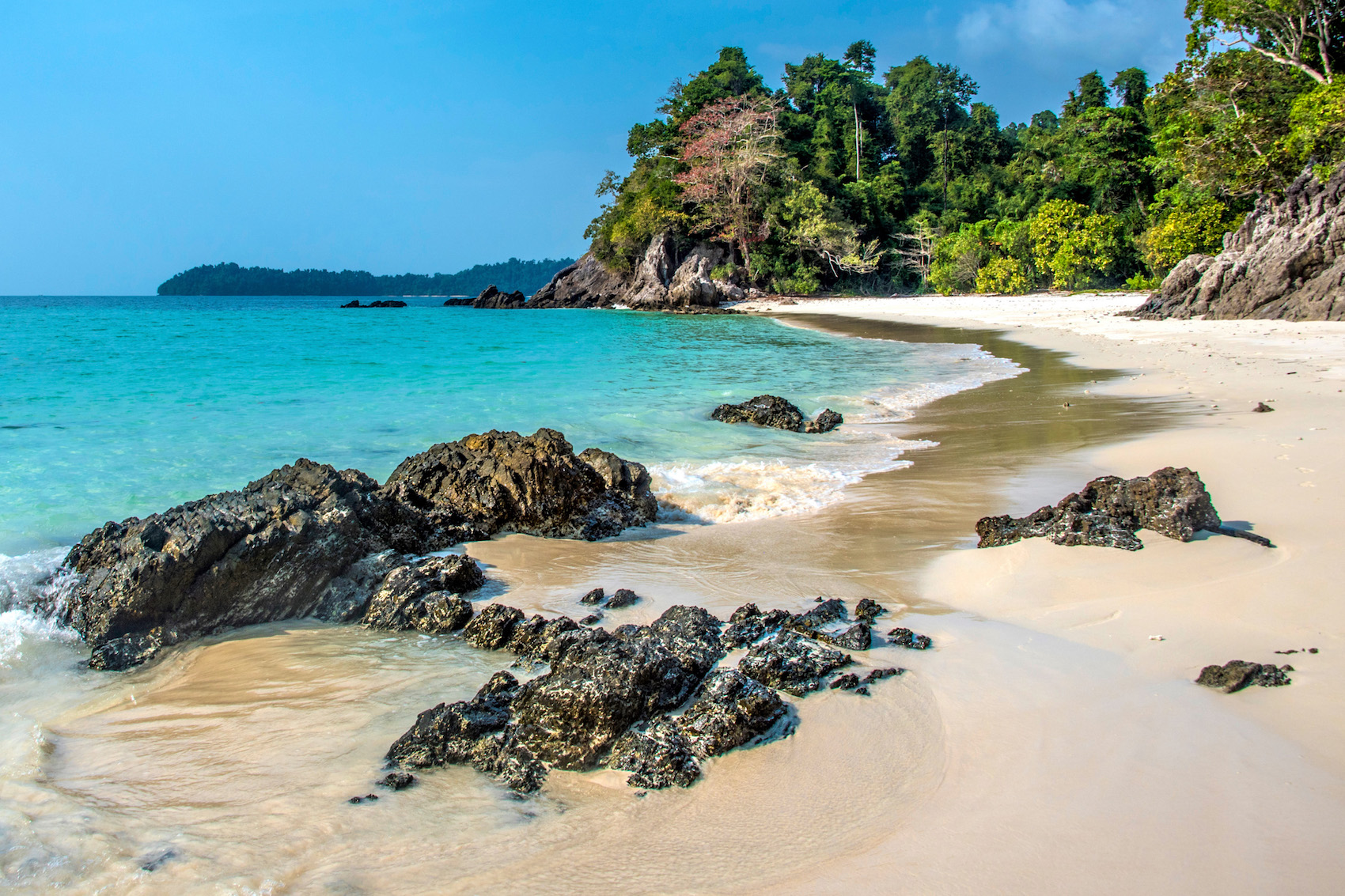
“It’s bizarre, I know,” the charming captain concedes, as we gaze upon the landscape, the most tropical one that at least I have ever seen, the decidedly red tree that flanks the beach on one side notwithstanding. “But it is, in fact, a sort of autumn.”
Although I’ve experienced four sunsets and four sunrises by this point in my trip, it’s difficult to believe that any time has passed—that nearly all of the time has passed, at least as far as the souls aboard the Raja Laut are concerned.
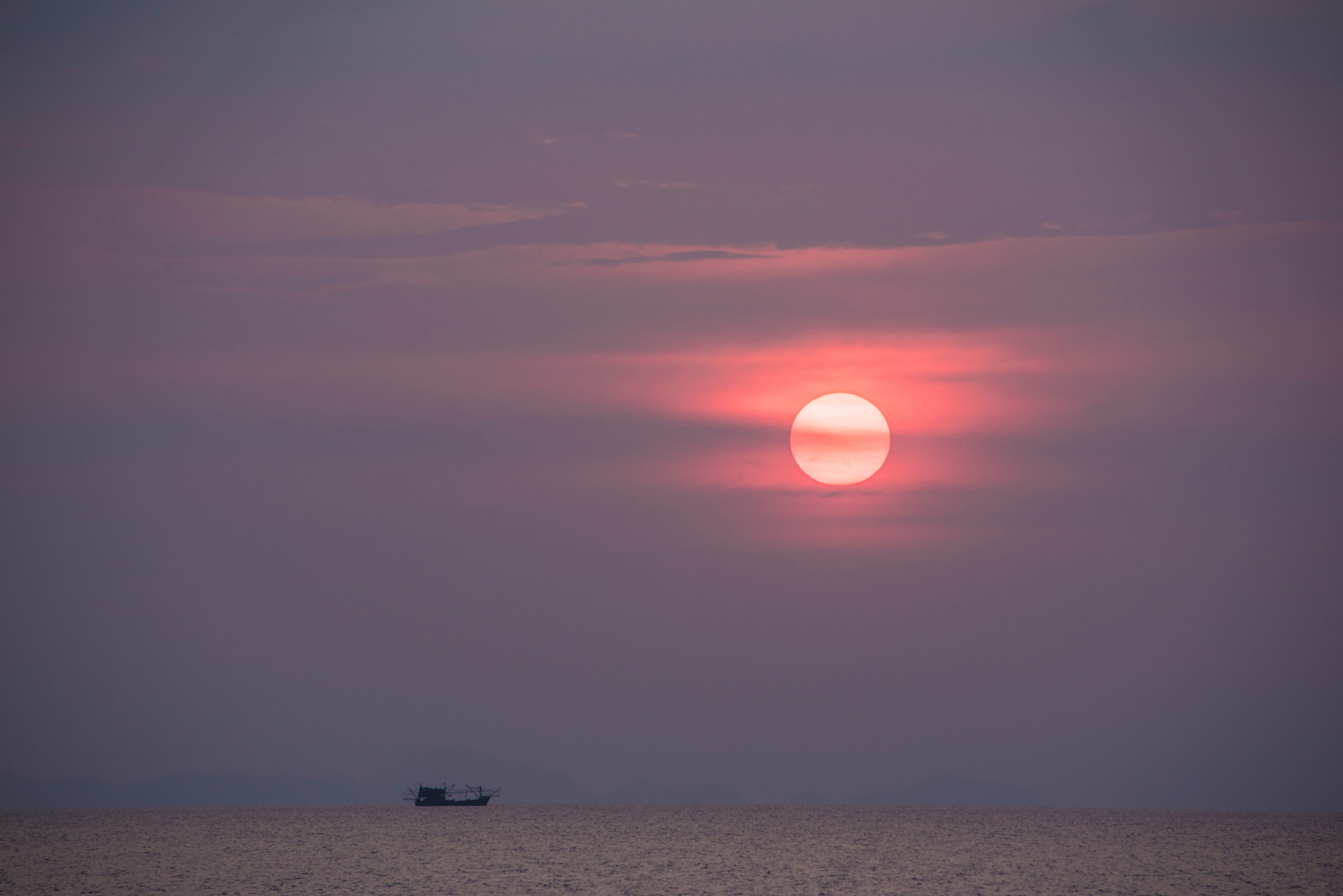
Nightfall erases the contrast between the bold, blazing leaves and the reliably jade-colored ones, excepting the makeshift lanterns the sweetest two members of the crew have fashioned into lanterns, assembled on either side of a sand path leading to a bonfire and a barbecue pit like a non-red carpet. This makes me feel as special as it does undeserving: I can never repay their kindness.
I share seared squid with my fellow passengers, in a crude, communal way not unlike how we devoured the whole fish that forced down the invisible barriers the 10 of us, like all “strangers” these days, insist on putting up. Our somber dance of fond reminiscence seems at once to last an eternity and a single instant, and ends at the waterfront.
The Chinese lanterns we light are nothing more than metal, paper and paraffin, but in my mind they embody desire, aversion and delusion as we release them into the sky, the SY Raja Laut gleaming on the dark horizon.
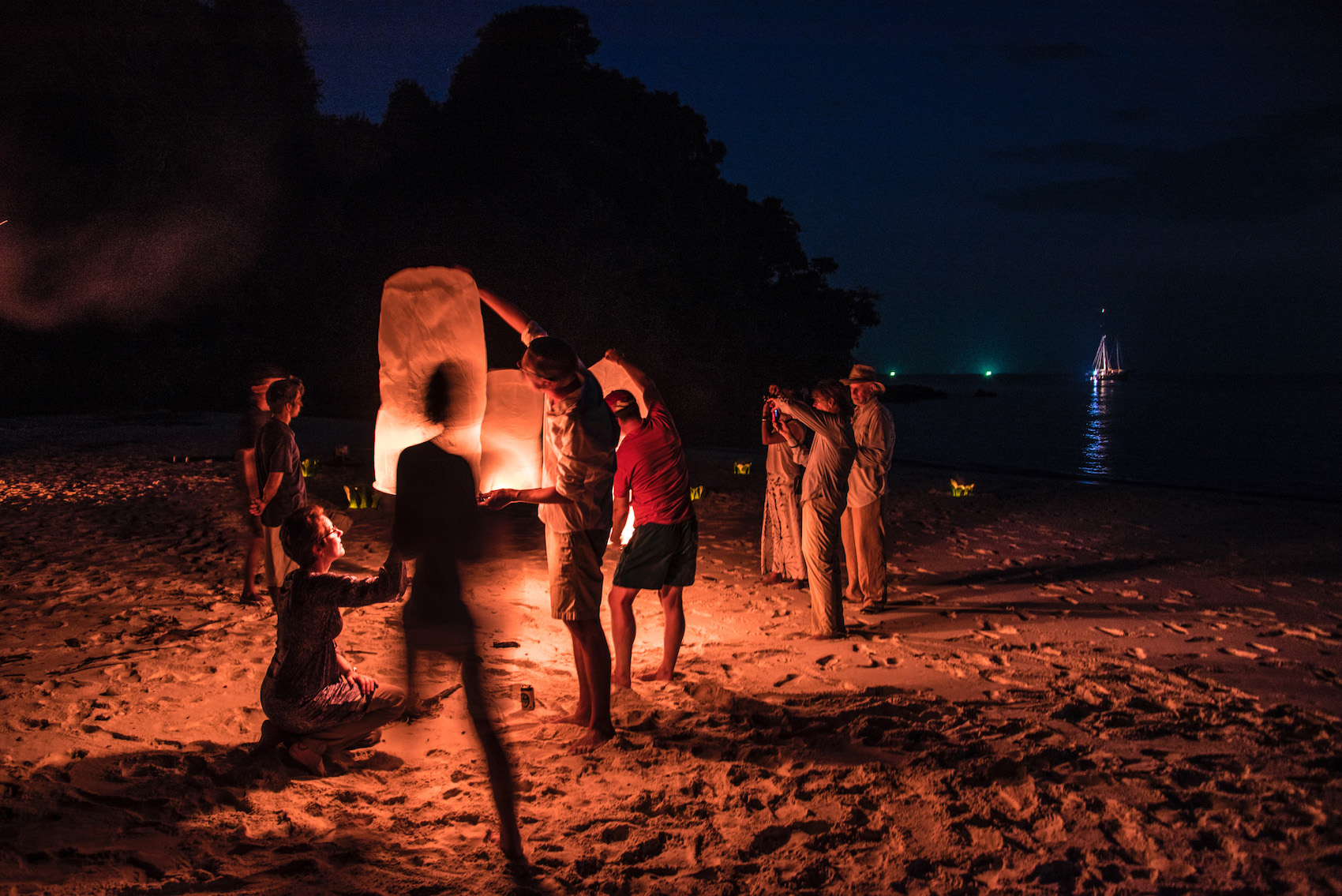
Burma Boating was kind enough to sponsor my trip through the Mergui Archipelago but as usual, all opinions are my own. Click here to learn more about their life-affirming sailing adventures.
FAQ About Visiting the Mergui Archipelago
Where is Mergui Archipelago located?
The Mergui Archipelago is located in southern Myanmar, off the west coast of the Malay peninsula just north of the border with Thailand. The islands are reminiscent of Thailand’s Similan Islands, although I’d argue the Mergui are more impressive because they’re less developed and there are more of them.
How do you get to Mergui Archipelago?
You can reach the Mergui archipelago by flying to Myiek Airport from Yangon and then getting a transfer to Kawthaung, or by flying from Bangkok to Ranong, Thailand, crossing the border and doing the same. Kawthaung Harbor is where your boat to the Mergui islands will be waiting.
What is done in the Mergui Archipelago?
The Mergui Archipelago is one of the most beautiful sailing destinations in Southeast Asia, and maybe the world. Apart from this (and various ecotourism activities on the islands themselves) there isn’t a lot on here, althuogh that’s arguably the point.



